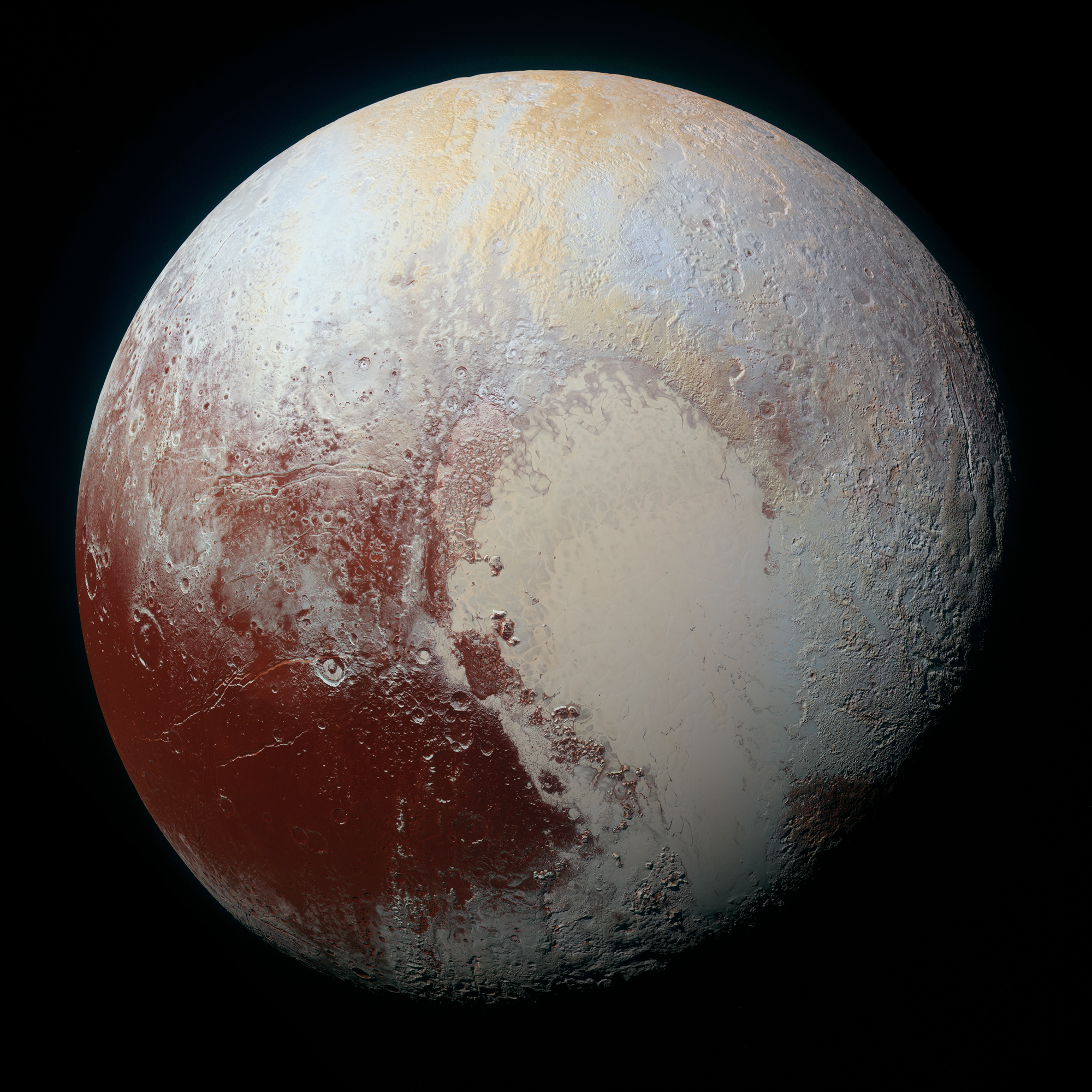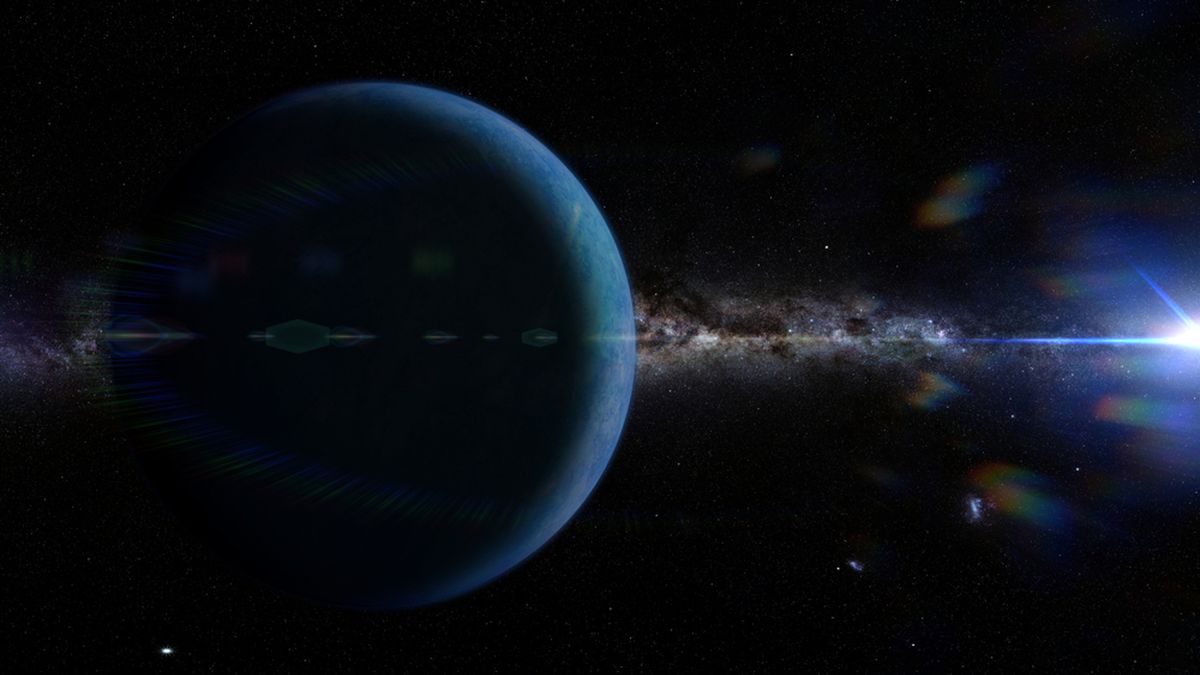





Pluto, the former planet in the outer solar system, has completed one revolution around the sun, marking an obscure anniversary of July 4, 1776 [57aff7ab]. Pluto, discovered in 1930 and classified as the ninth planet until 2006, continues to orbit the sun in the farthest reaches of the solar system. Since July 4, 1776, the US has grown from 13 colonies to 50 states, and the world's population has increased from 800 million to over 8 billion. The values expressed in the Declaration of Independence remain constant. Pluto's next revolution will be completed on May 25, 2272 [57aff7ab].
In a recent discovery made by NASA's New Horizons spacecraft, it has been found that the Kuiper Belt, which lies around Pluto, may extend billions of miles further than previously thought [9f05acf1]. The Kuiper Belt is a region in the outer zone of our solar system that contains several small planets and remnants of primordial rock. Until now, scientists believed that the Kuiper Belt had a certain boundary, but the new evidence suggests that the outer edge is much larger than expected, or there may even be a second belt. The New Horizons spacecraft will continue to explore the Kuiper Belt and its planetary worlds, providing valuable insights into the origins of our solar system [9f05acf1].
This discovery is particularly relevant to the ongoing study of the interactions between nearby stars and the solar system. By understanding the extent and dynamics of the Kuiper Belt, scientists can gain a more comprehensive understanding of the interactions between nearby stars and cometary bodies in the outer regions of our solar system [d70bf273].
The New Horizons spacecraft is expected to continue its operations until the 2040s, allowing for further exploration and discoveries in the Kuiper Belt. The findings from this mission will contribute to our knowledge of the origins and evolution of our solar system [9f05acf1].
The ongoing exploration of our solar system continues to provide new insights and expand our understanding of the cosmos. By combining observations from spacecraft like New Horizons and studies of nearby stars, scientists are uncovering new and exciting aspects of our cosmic neighborhood [d70bf273].
Exoplanet Kepler-452b, also known as 'Earth 2.0', was discovered on July 23, 2015, by mission scientists using data from the NASA Kepler Space Telescope. It is located 1,400 light-years from Earth and is the smallest known planet in the habitable zone around a Sun-like star [69d0b844]. Kepler-452b orbits its host star at the right distance for liquid water to be able to pool on its surface. The discovery of Kepler-452b made headlines because it was the first planet discovered 20 years after the first known planet orbiting a Sun-like star beyond our Solar System. Kepler-452b is 60% larger in diameter than Earth and could potentially be rocky. Its orbit is 385 days, just 5% longer than Earth's orbit, and it is 5% farther from its star than Earth is from the Sun. The star Kepler-452 is 6 billion years old, 1.5 billion years older than our Sun, has a similar temperature, is 20% brighter, and has a diameter 10% larger. The information on Kepler-452b was collected through ground-based observations at the University of Texas at Austin Fred Lawrence Whipple Observatory and the W. M. Keck Observatory [69d0b844].
Some experts believe that the solar system's hypothetical ninth planet, known as Planet Nine, could be just a few years away from being discovered [8c087806]. If this is the case, it would likely take at least a decade or more to send a spacecraft to the elusive world. Planet Nine is a theoretical planet in the outer solar system that is believed to be a dark, gas or ice giant planet between five and 10 times the mass of Earth. It is suspected to be located near the edge of the solar system and has proved to be extremely hard to find. The state-of-the-art Vera C. Rubin Observatory, set to survey the night sky in late 2025, may aid in its discovery. Once Planet Nine is detected, space agencies like NASA would want to send a probe to visit the distant world, but the mission would have to go through a lengthy and rigorous government selection process, which could take at least a decade or more. Private space exploration companies, such as SpaceX, could potentially launch missions sooner due to less bureaucracy. If a probe is sent to Planet Nine, it would likely take between 45 and 75 years for the spacecraft to reach the planet, assuming it is around 400 astronomical units from the sun. However, subsequent studies suggest that Planet Nine's true average distance from the sun is closer to 500 astronomical units, and it could currently be more than 550 astronomical units away. Despite these developments, the estimates for the travel time remain relatively unchanged. Advanced propulsion technologies, such as light sails, could potentially reduce the travel time to as little as seven years, but these technologies are not yet available. It is possible that humans will be able to visit Planet Nine in the far future as propulsion systems advance further [8c087806].
Johannes Kepler, a German mathematician, formulated three laws of planetary motion that describe how planets orbit the Sun. The laws state that (1) planets move in elliptical orbits with the Sun as a focus, (2) a planet covers the same area of space in the same amount of time no matter where it is in its orbit, and (3) a planet’s orbital period is proportional to the size of its orbit. Kepler's laws were crucial in the understanding of solar system dynamics and as a springboard to newer theories that more accurately approximate planetary orbits. Newton's version of Kepler's third law allows us to calculate the masses of objects in space, and it is the basis for measuring the masses of distant objects in space today. Kepler's laws remain an excellent guide for understanding how the planets move in our solar system [d59d7f6f].